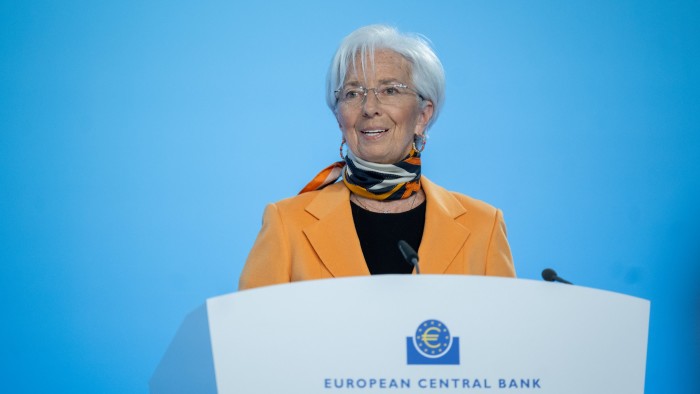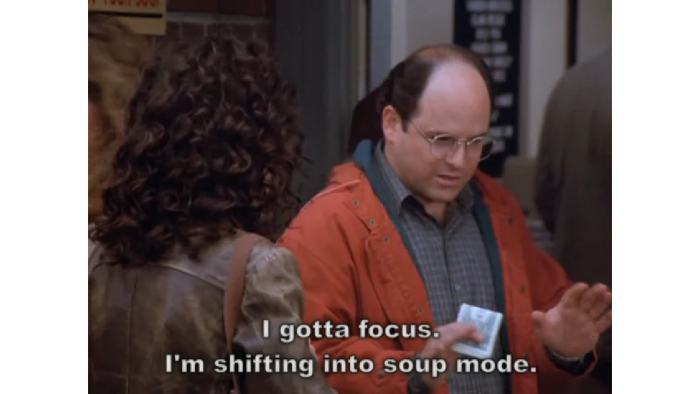Stay informed with free updates
Simply sign up to the Central banks myFT Digest — delivered directly to your inbox.
The writer is a former professor of economics and senior adviser at the Bank of England.
There are many dark visions of the far future of artificial intelligence: Skynet vs humans, as depicted in the Terminator franchise; Nick Bostrom’s Superintelligence running amok, turning the world into paper clips; or a world of worklessness, with either poverty or abundance — ‘fully-automated luxury Communism’ (depending on who owns the robots).
But a recent paper — The Emotions of Monetary Policy — which uses modern machine-learning techniques to crunch speeches at European Central Bank press conferences by Mario Draghi and Christine Lagarde, raises the prospect of another future that might not be all that far off, one that is also not wholly positive. I don’t know whether there would be a watchable sci-fi finance movie in it (please throw me a few $ as an executive consultant if you steal the idea), or even a new series of Industry, but read on and make your own judgement.
The ML method used in the paper, very roughly, is this: first, algorithms are run to turn video of facial expressions, the tone of voice in the audio, and the content in the text into data on emotions of different kinds. Second, these measures of emotions are compared with financial market data released during and after central bank speeches.
The inference of the paper is that the non-verbal information the algorithms are picking up (including smiles and frowns) do move financial markets. Whether this is causation or correlation, we can’t tell for sure. Maybe ECB watchers decode the non-verbal information informally. Or perhaps the correlation comes about because the non-verbal information eventually becomes verbal.
I don’t know how robust this work will turn out to be. The merits of this particular paper are not the main issue: there is a growing literature of work like this and looking beyond. As research like this becomes more widely known and replicable, and improves, one can imagine central bank watchers devoting resources to decoding visual and tonal information in real time. Perhaps algorithms used by ECB watchers could decode the non-verbal information better than the watchers were doing previously and informally. Computers can work flat out and don’t need to let off steam writing jokes in the Bloomberg chat.
The next step in the escalation of the algorithm war is that central bankers, knowing that their press conference speeches will be fed into ML algorithms, start to try to moderate their non-verbal communication to make sure that it has the effect on financial markets that they want it to. Perhaps they run rehearsals of their speeches through algorithms of their own, built to replicate the watchers’ programs as closely as possible, to try to gauge in advance how the watchers’ algorithms will judge what they say. Imagine a monetary policy maker talking over a small bank of screens reporting a guess of what the audience’s ML programs will be saying via 21st-century graphics, so that he or she can make adjustments in real time. Or just some equivalent of a producer in the speaker’s ear, saying “Ms. Lagarde, you need to smile a bit less” and “raise the eyebrows”.
The arms race then proceeds thus: The watchers go back and devise new algorithms that can rinse the new algorithmically informed speeches, themselves engineered to trick the old algorithms. Central bankers realise this and are forced to up their game. And so on.
Presumably the algorithms are going to produce mistakes: inferences about views about the economy and future policy that are not held by policymakers, causing (for example) yields to rise. These unintended effects then have to be responded to by more communication, those communications are gone over by the algorithms again, and the cycle continues.
Who knows where this ends? Perhaps central bankers withdrawing, either to reading pre-scripted remarks, or pulling back even further, reverting to releasing (AI-vetted) texts on their websites, lest reading the words out conveys something that was not intended and could unintentionally influence asset prices. In effect, that would mean computers taking over both sides of the press conferences, the speaking and the listening.
If central banking was a more definite science — if everyone on either side of the table understood what was producing inflation and exactly how to control it — there would be no need for thousands of processors to digest central bank speeches. But in that world, there would be almost no need for human policymakers at all.
If central bankers were completely transparent and not deceitful, ambitious, fearful of being caught out, prone to disagreeing with each other, or forgetful, there would be little for algorithms to unearth. Everything we needed to know would all be out there in the policy documents, charts and forecasts. But then humans are not like that. It’s because of these faults that we form committees of them, to average out their frailties, and tie them in institutions that constrain them.
It’s not hard to see that these kinds of techniques could complicate all kinds of sensitive public speaking. Finance ministers delivering or being interviewed about a new fiscal plan, concerned about the impact they will have on the cost of financing that plan; CEOs of public companies giving a speech accompanying a new earnings forecast for shareholders, hoping to achieve as favourable a reception as possible. Political leaders negotiating with each other trying to lie and lie-detect. Parliamentarians listening to their leaders or vice versa. Corporate lawyers duking it out over the terms of a merger or acquisition.
Indulge me for a moment as I assume that humans are still doing the substantive bit of policymaking or business at some point far into the future, and have not been put out of a job by artificial intelligence programs. Perhaps the real AI singularity we need to worry about is not a solar system of paper clips, but an arms race of algorithms deployed by speakers and listeners in all public arenas, wasting vast quantities of computing power that could have some more productive use.




















